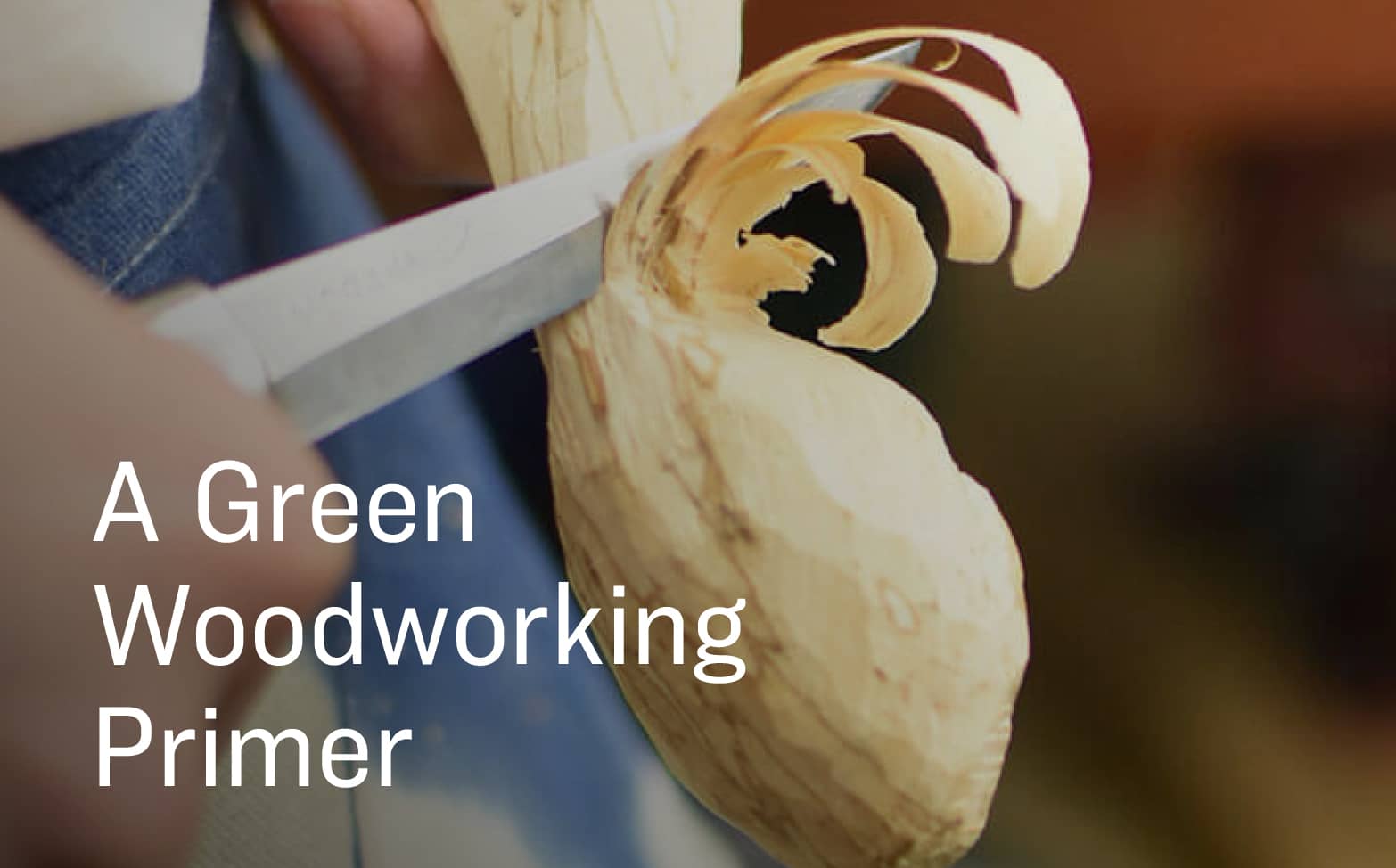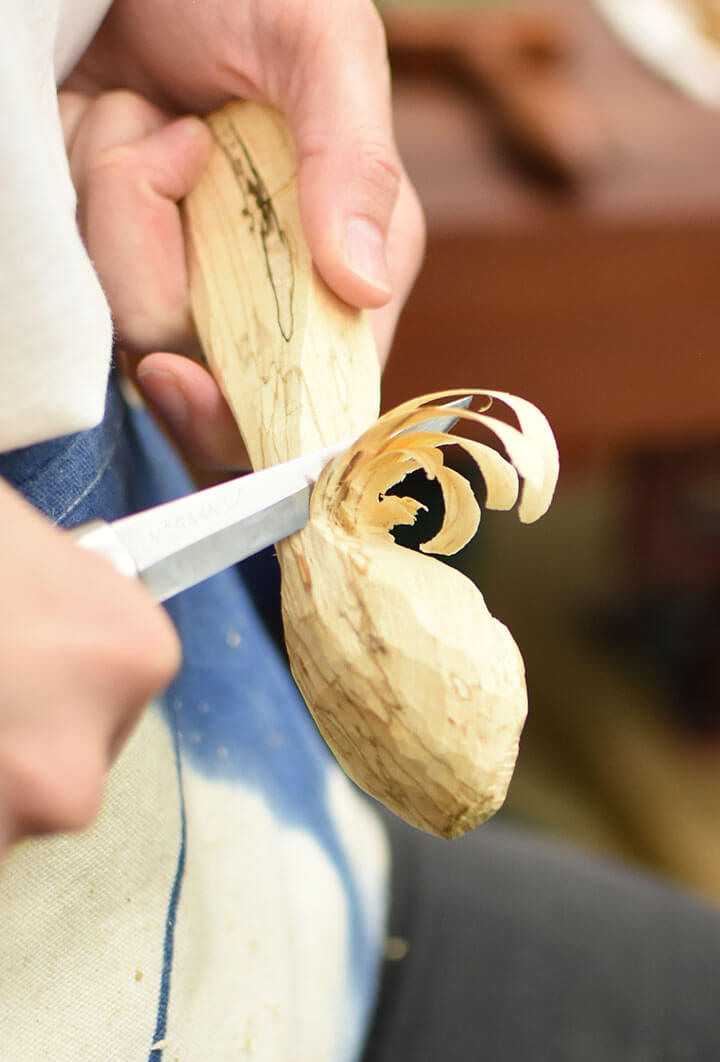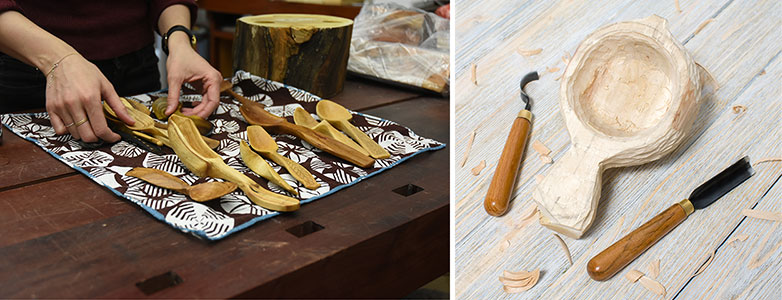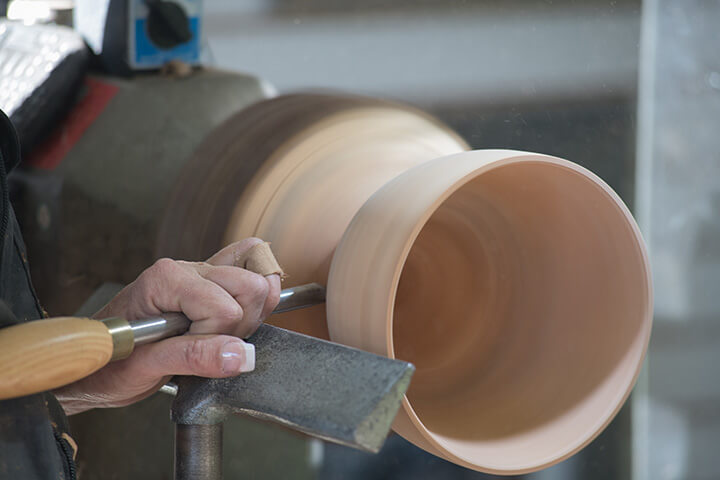
Japanese Garden Tools Vs. American: What’s the Difference?
You may have seen Japanese gardening tools popping up more in stores and online. Sure, they&rs… Read More


Let’s deconstruct a concept that’s become a flash-point of buzz, obsession, and occasional skepticism: green woodworking. The word “green” refers to the wood’s moisture content—it’s relatively wet, either freshly-felled or stored in such a way as to trap water in the fibers. This is in contrast to seasoned wood, which has been dried by kiln or otherwise. The practice of green woodworking has surged in popularity in the past several years, and what follows is a general overview of the pursuit for the otherwise uninitiated.

(Photo: A green woodworker carving a spoon)
It’s reasonable to wonder why green wood is preferable, since the properties of undried wood can be sometimes undesirable and occasionally disastrous—a crack formed while the wood dries unevenly can ruin a work in progress, and warping can disrupt symmetry. The advantages lie in exactly what makes the material volatile: wetter wood is softer and easier to cut through. This allows a craftsperson to work with hand tools, and smaller projects can be worked outside confines of a vice or bench. With green wood, the grain factors in more dynamically than it does with sawn lumber, as objects can be designed to maximize the strength potential of the grain by making cuts that follow the natural lines in the wood. There’s a mechanical efficiency to working with the grain, as the action of splitting is much easier than sawing. Another essential quality to green woodworking is that wood shrinks as it dries. The wizardry in making shrink pots or mortise and tenon joints in chair making comes from the way that green wood shrinking around dry wood will form a tight and secure joint.

(Photo Right: Hand woodworking tools from Garrett Wade, including, from top three-carving knives, two rasps, and four micro-carving knives)
Green woodworking is also “green” in terms of its environmental impact. Local sourcing of green wood effectively subverts the fossil-fuel driven infrastructure behind commercial harvesting, drying, and transportation of lumber. Avoiding commercial lumber also reduces the cost that the craftsperson shoulders—green wood can effectively be free. The tools themselves are also less expensive, and the investment for a beginner is minimal compared to an arsenal of power tools. There’s an economy of space, as the tools and supplies require less dedicated area to work with and store. This surmounts a barrier to entry for urban woodworkers with limited space, or for those who are just getting into the craft.

(Photo: A Kuksa in progress. Kuska are bowls and cups carved in a traditional Scandanavian style.)
The techniques of green woodworking are suitable for range of objects and designs. Spoons of all sizes, along with other utensils such as spreaders and spatulas, are quite popular to make. Bowls and cups (including a Scandinavian style known as a kuksa) can be carved or turned. Figure carving can manifest itself as a decorative handle on a utensil, or comprise the entire design, as with fan birds (in the Eastern European style) or the Swedish dala horse. Green woodworking principals can apply to larger objects, as well-“staked” furniture is crafted with cylindrical or conical joints and tenons which are mortised into a thick slab of wood to make chairs, stools, and benches. Welsh stick chairs and Windsor chairs are popular styles within this centuries-old method of construction. Post and rung chairs feature similar joint construction and are topped with a woven seat. For all of these styles, legs and rungs can be riven from a log and shaped using a drawknife and spokeshave, or alternatively, turned on a lathe.

(Photo: Tools of the trade for the green woodworker. Hand Adze from Garrett Wade, a millennia-old tool used for gauging large chunks of wood.)
The tool requirements for green woodworking will appeal to obsessive collectors and minimalists alike. Those inclined towards toolkit simplicity will wax philosophical about the minimalism that green woodworking allows: at simplest, you can make a range of objects with a straight knife, an axe, and a hook knife. (And, for the maximalist, one can never run out of options for sizes or shapes of these three essentials.)

(Photo: Green woodworking on a lathe.)
Working green wood with hand tools is an obvious pairing, but people often ask whether using electric tools is verboten. Mentioning power tools is a sure way to get a heated debate going in a room full of green woodworkers, and it’s a common argument that plays out in social media comment sections and woodworking forums. In order to talk sense in the face of dogma, it’s important to consider the end goal. A hobbyist, with the time and intention of making several small objects a month, might be drawn to green woodworking because it does not require them to have access to power tools. On the other hand, a career woodworker who relies on their craft for any amount of their income might consider a bandsaw or an electric lathe to be an essential part of the process and a guarantee that they can reach a quantity to take to a local craft fair or farmer’s market. Others might have access to power tools, but for reasons related to their own philosophy or vision of process, they choose not to use them. And, working green wood on power tools comes with a trade-off for the efficiency—wet wood can gum up bandsaw blades and other machinery.
Take a look on any social media platform and you’ll see how the momentum surrounding the practice of green woodworking has been surging in recent years. In spite of this seeming novelty, it’d be a shortsighted to not acknowledge the anachronism of the craft—you might hear a phrase like “the new wood culture”, referencing a new crop of craftspeople bringing fresh ideas to the practice, but the term green woodworking was coined about 50 years ago. Even further back, consider the way that, before kiln-drying was industrialized, green woodworking was the norm… and it was simply called “woodworking”. Green woodworking has essentially been practiced by every culture that has had access to trees. So, what defines the movement in its current form? Perhaps the momentum of this new generation comes from the ease of information sharing. Folk craft schools run classes, and festivals bring woodworkers together, and there is the occasional practice of the artisan teaching the apprentice, but many of us who come to the form learn about it through a social media post, hashtag, or blog entry, followed by an endless stream of tutorial videos available for free or low cost. It’s a wonderful advantage to the world of craft that knowledge can be shared so widely and instantaneously, but nothing compares to the experience of receiving real-time feedback. So, if you’re interested in learning more, then get out there, book a class or join a club, and see for yourself what the excitement is about.